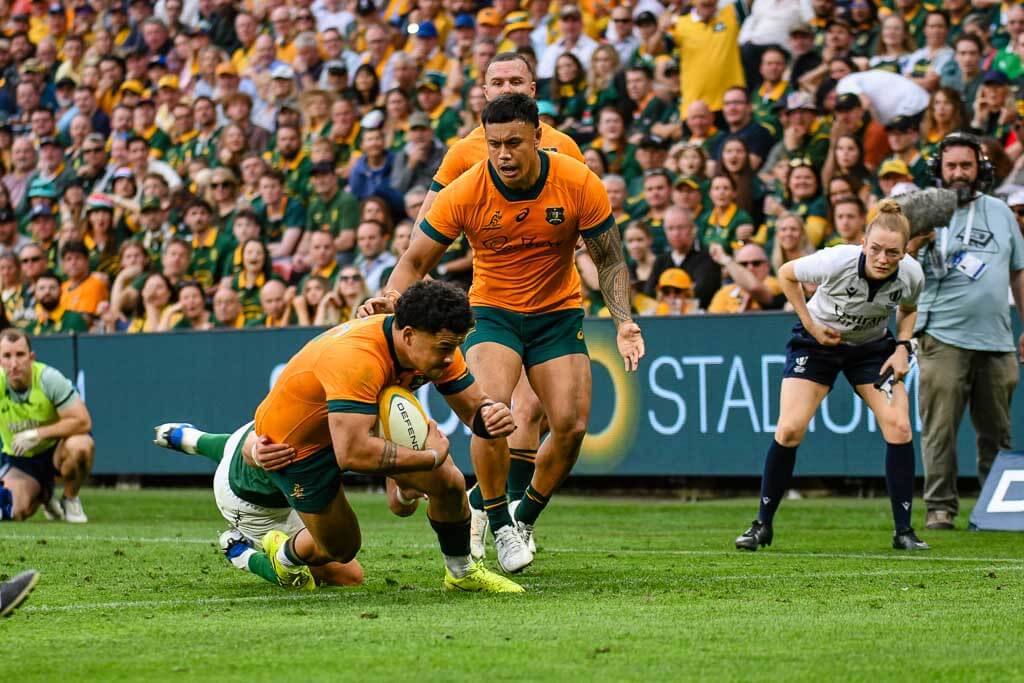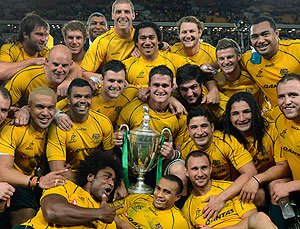Here’s another great article written by Dave P. Well done mate it’s a cracker.



So what went wrong with the Wallabies post the ‘golden era’ . 2001 Wallabies are World #1, have just beaten the Lions, won the Bledisloe 2-0 and have won their first Tri-Nations title following Kefu’s try in John Eales last match. Rod Macqueen had retired following the triumph over the Lions. Many people place the decline of the Wallabies at the feet of the newly appointed coach Eddie Jones but that would be unfair as the seeds for the decline were planted several years earlier, though he was a major component of it.
The Birth of Professionalism
When professionalism came in 1995, after having seen off the circus, the ARU appointed John O’Neill as their CEO. Being a former banker and numbers man, O’Neill looked to maximise the revenue generation of the Wallabies and looked to cut costs. Of his cost cutting measures two early examples (which are still being felt today) was to end the “Run Wallaby Run” advertising campaign aimed at getting kids to take up rugby and Dick Mark’s coaching academy at the AIS.
The ramifications of the first program being cut (combined with a lack of free to air exposure) lead to a decline in junior participation. This was exacerbated in 1996 with a further decision to move away from promoting junior rugby and focus efforts on attracting 15+ year olds as “most kids give away rugby at 15” (this was a quote from JO’N in Rugby Review in 1996). This short sighted decision did not factor in that even though kids leave the game at 15, it stays in their memory and some come back to play in their early 20s, being rugby aficionados they were more likely to attend Super rugby and test matches, get involved with their local clubs as sponsors or administrators and eventually to bring their own kids, the next generation, into rugby. Rugby’s loss has been AFL and soccer’s gain.
The loss of the coaching academy has led to a decline in coaching standards and started to be felt in 2005. Players are now coming through to super rugby lacking basic catch and pass skills, breakdown nouse and tackling technique issues.

Eddie F*&%$$g Jones
The success of Rod Macqueen’s Wallabies stemmed from an early embrace of professionalism and the implementation of structures that maximised the individual skills of his playing group. When Eddie took over Rod Macqueen’s structures stopped being a framework in which the players expressed themselves and fed off each other to a straight jacket, strangling all creativity out of the team.
It is no coincidence that under Jones the league-player experiment was entered into with Rogers, Sailor and Tuqiri signed, apparently because people followed players and not teams and having the league players in the Wallabies (whether they earned their place or not) would bring millions of new fans to watch the world cup in 2003. Jones espoused the ‘superior’ athletic ability of his league imports over world class Wallabies such as Bourke, Latham, Roff, and Tune. The advent of these ‘athletes’ led to a further ‘dumbing down’ of the Wallabies.
Eddie, in 2002, said something along the lines of “teams are scoring off x breakdowns so in future the game will require more and more breakdowns in order to break down the defence”. As a fan at the time I thought back to league in the 80s and Warren Ryan’s Canterbury defence system. The system was overcome by upskilling the ball skills of the forwards and offloads in the tackle. I thought that to break down defences, this would need to be brought into rugby, which is what Grahame Henry did with the All Blacks from 2004 with great effect. Eddie’s coaching plans were based on statistics of what was happening and not on ways of overcoming the status quo, innovation had left Australian rugby.

His preference for statistics led to one of his great innovations, the ‘7 minute scrum sessions’ as scrums only took up a certain percentage of matches. An already struggling component of the Australian game was crippled to the point of embarrassment, culminating in that scrum at Twickenham in 2005. Mercifully, Eddie Jones was sacked following this debacle but the damage had been done.
When he left the Wallabies scrum was a joke and any collapse was laid at their feet (whether they were responsible or not), players were stuck in patterns of play rather than playing what was in front of them (who can forget poor old Seve Kefu getting smashed by the Springboks at Ellis Park in 2003 with flyhalf Nathan Grey repeatedly playing route 1 ball). Australian rugby has been playing catch up ever since whilst the issues of junior coaching and recruitment have been ignored for the past 30 years.

